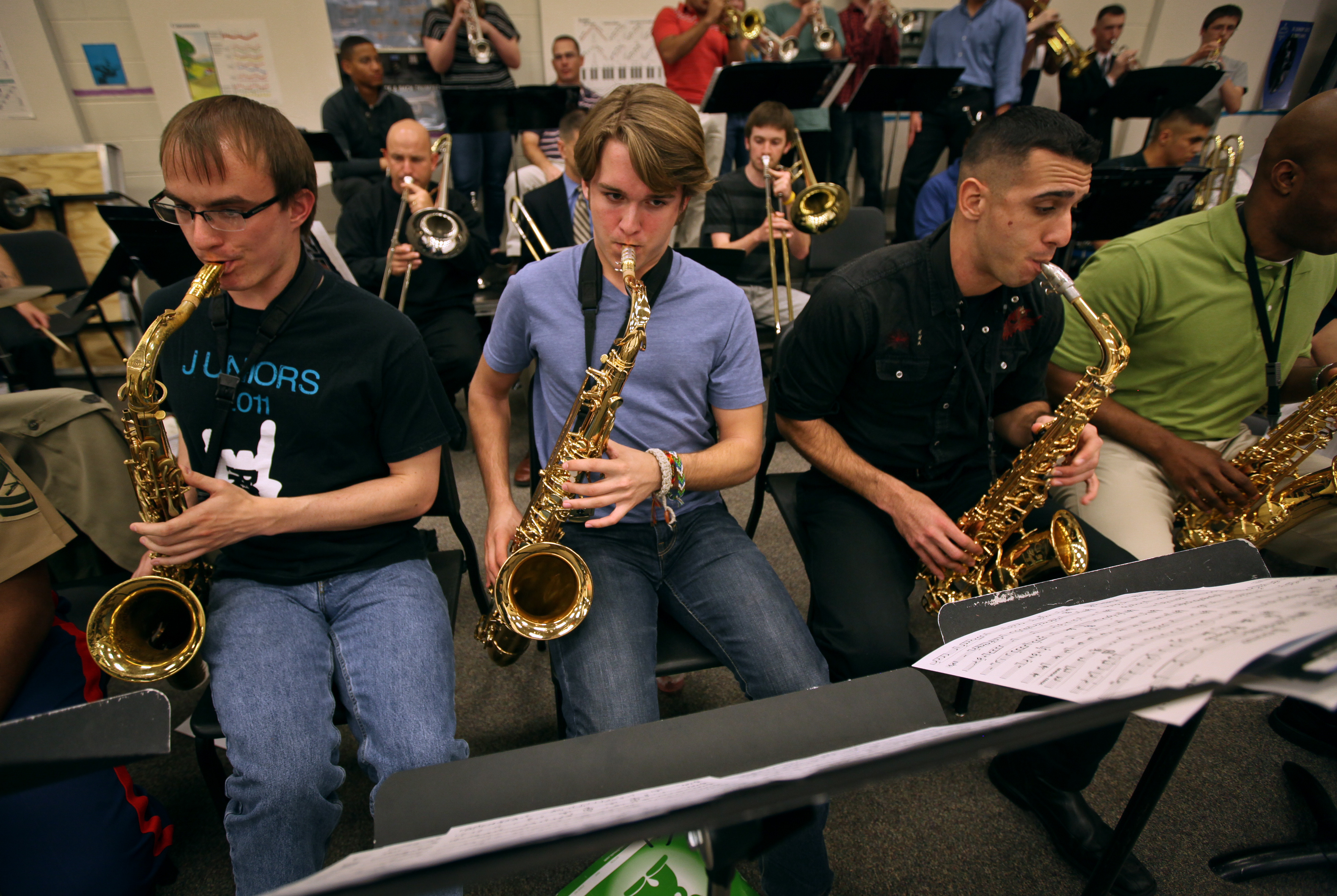Views expressed in opinion columns are the author’s own.
If your K-12 music education experience was anything like mine, you were probably given the option to learn a musical instrument sometime between fourth and sixth grade, whereupon you would participate in the school’s concert band or orchestra.
If you were lucky, perhaps your school would offer a jazz or Latin ensemble as an elective or extracurricular activity, but the lion’s share of your time in academic music was spent with the great wind band works of the 20th century or watered-down excerpts from the canon of classical music.
After high school, unless you chugged the whole glass of Kool-Aid like yours truly and became a music major (or joined the marching band), you probably packed up your trumpet or flute or violin and haven’t touched it since.
There’s nothing inherently wrong with this system. The benefits of music education of the sort just described are extensive and well-documented, and there’s plenty of aesthetic value in the music played by middle and high school bands around the nation. That said, I have a somewhat radical proposition that I think would better serve students: Why not make jazz band the default option for those interested in music?
Playing in a jazz band affords students ample opportunity to learn about fundamental structural elements of music, such as scales and harmonies, in a way that is both less esoteric than a standard music theory class and more practical than what might be mentioned in a concert band setting.
Learning how to improvise gives a student a new perspective on music of all genres and allows for creative expression to a much greater degree than performing written music. Improvising over a rhythm section helps develop a musician’s ear or their ability to aurally recognize and replicate various musical devices.
Beyond the purely pedagogical benefit, “jazz” in its various forms is simply more relevant than concert band to the kinds of music middle and high school students tend to prefer. Kendrick Lamar might not be recording straight from The Great American Songbook, but he did feature jazz pianist Robert Glasper, saxophonist Kamasi Washington and drummer Robert “Sput” Searight on To Pimp a Butterfly.
The influence of jazz — especially later styles like jazz fusion — on hip-hop and R&B is profound and only increasing. More obviously, jazz band instruments like pianos and saxophones are far more prevalent in pop styles than the bassoons and euphoniums of the concert band.
It seems reasonable to think that giving students a chance to play music relevant to their own interests would increase both raw numerical participation and motivation in K-12 music education. I daresay this is why jazz band tends to work in the extracurricular model to begin with — no disrespect to Percy Grainger, but it is certainly easier for eighth graders to get excited about music with a drumbeat and bassline than “Lincolnshire Posy.”
Plus, learning to improvise grants students the ability to play music in their preferred styles on their own time. This surely increases the likelihood of continued direct engagement with music outside the classroom and later in life.
It has always seemed somewhat strange to me that what is arguably America’s greatest cultural achievement is left in schools as an afterthought in favor of European wind and military band music. Jazz is a culturally important, pedagogically valuable, uniquely American part of our music and history. Doesn’t it deserve a more central place in our curricula?
Joey Marcellino is a senior jazz saxophone, physics and philosophy major. He can be reached at fmarcel1@terpmail.umd.edu.



